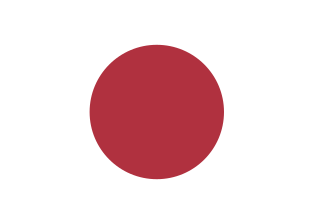 W
WKorea under Japanese Rule or Korea under Japanese Occupation was the period between 1910 and 1945, when Joseon Korea came under the Japanese sphere of influence in the Japan–Korea Treaty of 1876. A complex coalition of the Meiji government, military, and business officials began a process of Korea's political and economic integration into Japan. The Korean Empire became a protectorate of Japan in 1905 in the Japan–Korea Treaty of 1905 and the country was indirectly ruled by the Japanese through the Resident-General of Korea. Japan formally annexed Korea in 1910 in the Japan–Korea Treaty of 1910, without the consent of Gojong, the regent of the Korean Emperor Sunjong. The Japanese Empire had established the Korean Peninsula as a colony of Japan administered by the General Government based in Keijō (Gyeongseong) which governed Korea with near-absolute power.
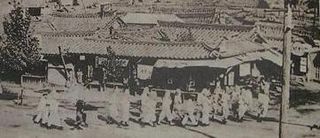 W
WThe 105-Man Incident or Seoncheon Incident took place while Korea was under Japanese rule.
 W
WAhn Eak-tai was a South Korean classical composer and conductor. He conducted numerous major orchestras across Europe, including the Vienna Philharmonic Orchestra, the Berlin Philharmonic Orchestra, and the Rome Philharmonic Orchestra. Ahn composed "Aegukga", a song best known as the national anthem of South Korea, Korean Dance, Nongae, and the Symphonic Fantasy Korea. His unpublished works, some of which have been discovered recently, include Poema Synfonic ‘Mallorca, Lo Pi Formentor, and The Death of Emperor Gojong.
 W
WAlddreu Airfield also known as Cheju-do No. 2 (K-40) Air Base was a former Imperial Japanese Navy Air Service and United States Air Force (USAF) air base on southern Jeju Island. It was mostly returned to farm land from the late 1960s onwards, though the site is still owned and used to some extent by the Republic of Korea Air Force, in particular a grass airstrip known semi-officially as Alddreu Airport.
 W
WThe Bank of Joseon or Bank of Chosen was the central bank of Colonial Korea, and of South Korea. The bank issued the Korean yen from 1910 to 1945 and the won from 1945 to 1950.
 W
WThe Battle of Namdaemun was an insurgency by the Korean army against Japanese forces in Korea. It was a reaction to the disbandment of the Korean army following the Japan-Korea Treaty of 1907. It took place at Namdaemun Gate in Seoul on August 1, 1907.
 W
WThe Battle of Pochonbo was an event which occurred in northern Korea on 4 June 1937, when Korean and Chinese guerrillas commanded by Kim Il-sung attacked and defeated a Japanese detachment during the anti-Japanese armed struggle in Korea. The battle holds an important place in North Korean narratives of history.
 W
WThe Chosen Government Railway was a state-owned railway company in Korea under Japanese rule. It was a department of the Railway Bureau of the Government-General of Korea, whose functions were the management and operation of railways in Korea, as well as the supervision of privately owned railway companies.
 W
WChōsen Shrine was the most important Shinto shrine in Korea from 1925 to 1945, during the period of Japanese rule. The famous architect and architectural historian Itō Chūta, also responsible for Meiji Jingū, contributed to its planning.
 W
WThe Chosen Railway Company, was a privately owned railway company in Japanese-occupied Korea.
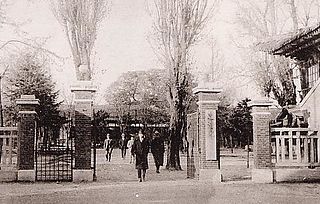 W
WChūsei-hoku Prefecture was one of the administrative divisions of Korea during Japanese rule, with its capital at Seishū. The prefecture consisted of modern-day North Chungcheong, South Korea.
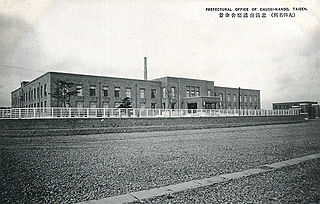 W
WChūsei-nan Prefecture was one of the administrative divisions of Korea during Japanese rule, with its capital at Taiden. The prefecture consisted of modern-day South Chungcheong, South Korea.
 W
WThe Dong-A Ilbo is a newspaper in Korea since 1920 with daily circulation of more than 1.2 million and opinion leaders as its main readers. The Dong-A Ilbo is the parent company of Dong-A Media Group (DAMG), which is composed of 11 affiliates including Sports Dong-A, Dong-A Science, DUNet, and dongA.com, as well as Channel A, general service cable broadcasting company launched in 1 December 2011. It covers variety of areas including news, drama, entertainment, sports, education, and movies. The Dong-A Ilbo has partnered with international news companies such as The New York Times of the United States of America, The Asahi Shimbun of Japan and The People's Daily of China. It has correspondents stationed in five major cities worldwide including Washington D.C., New York, San Francisco, Beijing, Tokyo, Cairo and Paris. It also publishes global editions in 90 cities worldwide including New York, London, Paris and Frankfurt.
 W
WThe Great Kantō earthquake struck the Kantō Plain on the main Japanese island of Honshū at 11:58:44 JST on Saturday, September 1, 1923. Varied accounts indicate the duration of the earthquake was between four and ten minutes. Extensive firestorms and even a fire tornado added to the death toll. Ethnically-charged civil unrest after the disaster has been documented.
 W
WThe Keijin Railway LP, was a privately owned railway company in the Korean Empire.
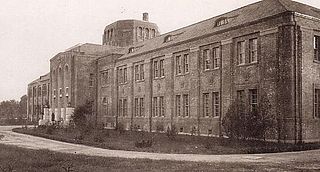 W
WHeian-hoku Prefecture was one of the administrative divisions of Korea during Japanese rule, with its capital at Shingishū. The prefecture consisted of modern-day North Pyongan, North Korea.
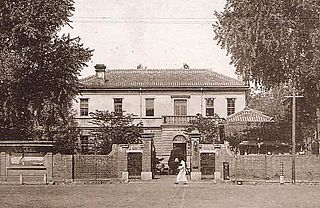 W
WHeian-nan Prefecture was one of the administrative divisions of Korea during Japanese rule, with its capital at Heijō. The prefecture consisted of modern-day South Pyongan, North Korea.
 W
WHeijō Shrine was a Shinto shrine in Pyongyang during the Japanese colonial rule in Korea. Its name derived from the Japanese name for Pyongyang during its occupation of Korea. It was established in 1913, and was defunct after 1945. The shrine's main annual festival was held on October 2.
 W
WThe Japan–Korea Treaty of 1910, also known as the Japan–Korea Annexation Treaty, was made by representatives of the Empire of Japan and the Korean Empire on August 22, 1910. In this treaty, Japan formally annexed Korea following the Japan–Korea Treaty of 1905 by which Korea became a protectorate of Japan and Japan–Korea Treaty of 1907 by which Korea was deprived of the administration of internal affairs.
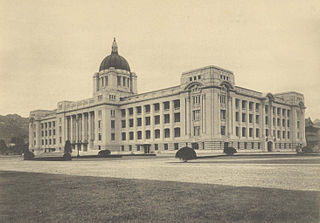 W
WThe Japanese General Government Building, also known as the Government-General Building and the Seoul Capitol, was a building located in Jongno District of Seoul, South Korea, from 1926 to 1996.
 W
WThe Japanese Korean Army was an army of the Imperial Japanese Army that formed a garrison force in Korea under Japanese rule. The Korean Army consisted of roughly 350,000 troops in 1914.
 W
WKankyō-hoku Prefecture was one of the administrative divisions of Korea during Japanese rule, with its capital at Seishin. The prefecture consisted of modern-day North Hamgyong, North Korea.
 W
WKeijō, or Gyeongseong was an administrative district of Korea under Japanese rule. It corresponds to the present Seoul, capital of South Korea.
 W
WKeijō Imperial University , colloquially referred to as Jōdai (城大), was an Imperial University of Japan that existed between 1924 and 1946. This university was established in 1924 in Gyeongseong, known as Keijō during the period of Japanese occupation of Korea, now modern-day Seoul, South Korea. Keijō Imperial University was abolished by the United States Army Military Government in Korea (USAMGIK) in 1946, following the Japanese surrender to the Allies and the subsequent withdrawal of Japan from its occupation of Korea at the end of World War II.
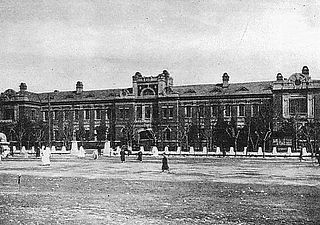 W
WKeiki Prefecture was one of the administrative divisions of Korea during Japanese rule, with its capital at Keijō. The prefecture consisted of modern-day Gyeonggi, South Korea.
 W
WKeishō-nan Prefecture was one of the administrative divisions of Korea during Japanese rule, with its capital at Fuzan. The prefecture consisted of modern-day South Gyeongsang, South Korea.
 W
WThe Korean National Revolutionary Party, or KNRP, was a nationalist party formed by exiles in Shanghai in 1935 to resist the Japanese occupation of Korea. At first it was the main nationalist Korean political party, but as the Sino-Japanese War (1937–45) progressed the rival Korean National Party, later Korea Independence Party, gained more influence with the Chinese Nationalist government in Chongqing and came to dominate the Korean Provisional Government. The KNRP of America was a significant factor as a source of funds and a link to the US government. The KNRP was dissolved in 1947.
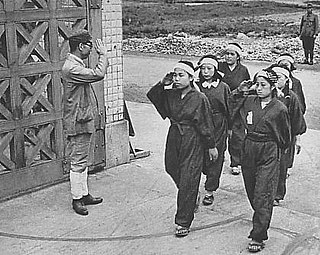 W
WKorean Women's Volunteer Labour Corps or Peninsula Women's Volunteer Corps was the Korean part of the Women's Volunteer Corps, which was created in April 1944 as a work group for Japanese and Korean women. Although its official purpose was to give women a chance to serve the Empire of Japan prior to marriage, it was a means to compel women to perform labor duties.
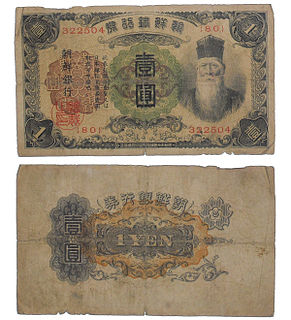 W
WThe Korean yen was the currency of Korea between 1910 and 1945. It was equivalent to the Japanese yen and consisted of Japanese currency and banknotes issued specifically for Korea. The yen was subdivided into 100 sen. It replaced the Korean won at par and was replaced by the South Korean won and the North Korean won at par.
 W
WThe North Chōsen Colonial Railway, was a privately owned railway company in Japanese-occupied Korea.
 W
WThe Oriental Development Company, established by the Empire of Japan in 1908, was a national enterprise built as a colonial exploitation policy towards the Korean Empire and other countries in East Asia. The company was headquartered first in Seoul, then in Tokyo.
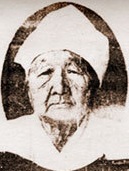 W
WPaek Son-haeng was a Korean businesswoman known for her philanthropy. The name "Son Haeng" means virtuous deeds, and was a nickname bestowed on her due to her contributions. North Korean sources claim that she was born in modern-day Chung-kuyŏk, Pyongyang, but South Korean sources claim that she was born in Suwon. She was widowed at the age of 16 or 20, and spent the rest of her life saving money while spending very little. Regardless of her place of birth, she spent most of her life in Pyongyang, where most of her donations were made.
 W
WPaik Sun-yup was a South Korean military officer. He served both Manchukuo and South Korea, the latter during the Korean War.
 W
WThe Samcheok Railway, was a privately owned railway company in Japanese-occupied Korea.
 W
WSeodaemun Prison History Hall is a museum and former prison in Seodaemun-gu, Seoul, South Korea. It was constructed beginning in 1907. The prison was opened on October 21, 1908, under the name Gyeongseong Gamok. During the early part of the Japanese colonial period it was known as Keijo Prison. Its name was changed to Seodaemun Prison in 1923, and it later had several other names.
 W
WSōshi-kaimei (創氏改名) was a policy of pressuring Koreans under Japanese rule to adopt Japanese names. It consisted of two parts. Ordinance No. 19, issued in 1939, required sōshi, literally "creation of a family name" (see Bon-gwan ). Ordinance No. 20, issued in 1940, permitted kaimei, change of one's given name; this was voluntary and the applicant was charged a fee.
 W
WThe Temporary Military Railway Office, was a pseudo-corporate entity established by the Imperial Japanese Army to build and operate the Gyeongui Line railway from Gyeongseong to Sinuiju.
 W
WThe Yalu River Broken Bridge is a truncated railway swing bridge converted to a viewing platform and historical site. Constructed in 1911 by the Empire of Japan, it was the first bridge built across the Yalu River and connected the Chinese city of Dandong with the Korean city of Sinuiju, linking Japanese-ruled Korea to the Eurasian rail network. The bridge originally consisted of twelve truss spans supported by stone foundations in the riverbed. During the Korean War, the eight spans over the Korean side of the river were badly damaged by American bombing, and were subsequently dismantled. The bridge was not rebuilt. Instead, the remaining four spans over the Chinese side of the river were converted to a walkway, a viewing platform, and a historical site.
 W
WYi Bangja, Crown Princess Uimin of Korea was the consort of Crown Prince Euimin of Korea.